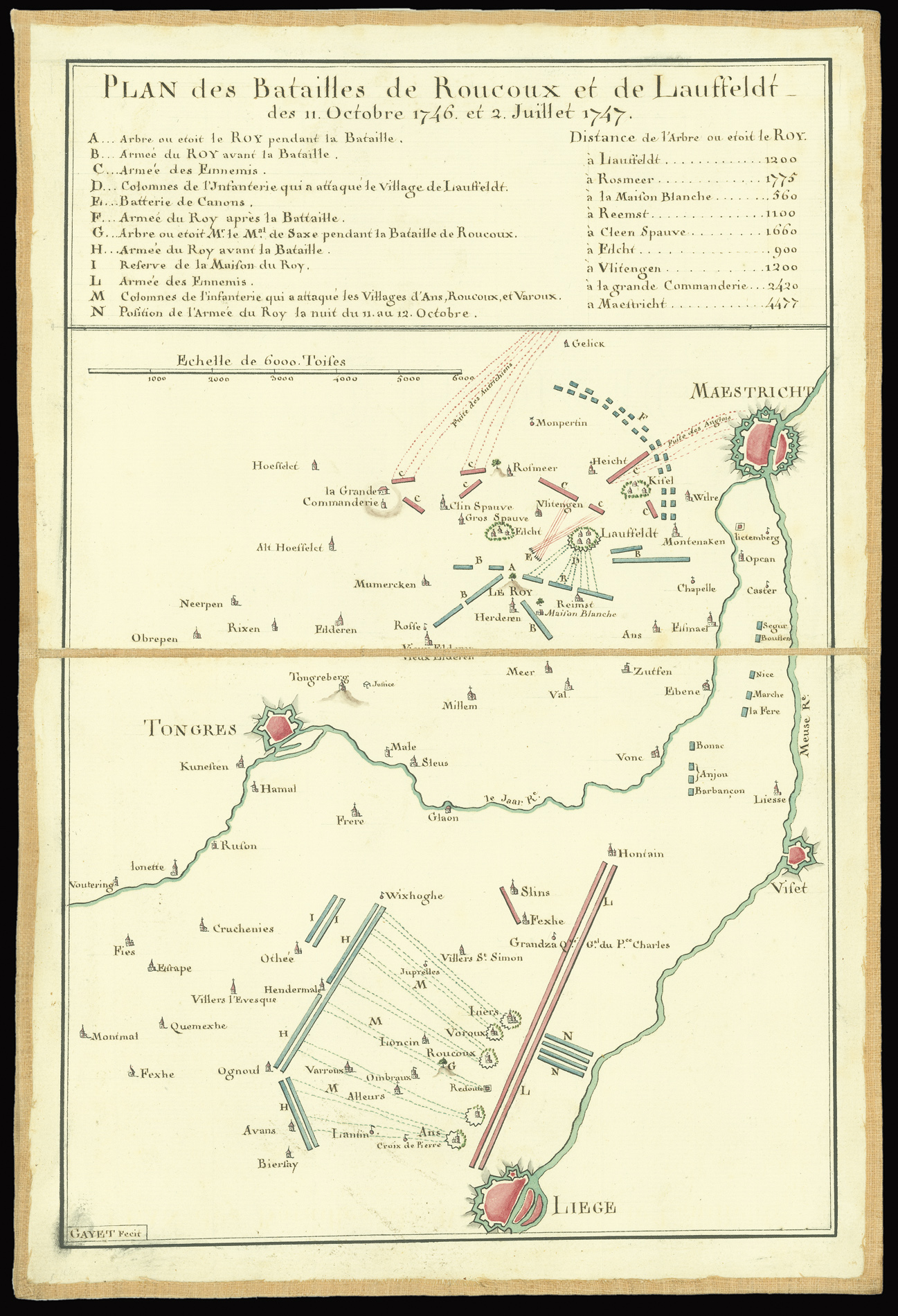
Battle of Roucoux and Lauffeldt des 11 Octobre 1746 et 2 Juillet 1747
- Author: GAYET
- Publication date: 1747
- Physical description: Manuscript plan with original hand-colour, dissected and mounted on linen.
- Inventory reference: 2794
Notes
Small plan delineating the battles of Roucoux and Lauffeldt from 1746 and 1747.
The map extends from Maastricht to Tongres and Liege, showing the two battles that secured the French victory over the allied troops of British, Hanoverians, Austrians and Dutch armies.
On the top part of the plan is, to the left, an alphabetical key explaining the army’s positions and movements, and to the right the King’s distance to the main villages and towns where the battles took place.
The first battle, of Roucoux, was fought on 11th October 1746 just outside the city of Liege. The allied army was between Liege and the village of Roucoux, stretching almost until the river Jaar. The French attacked the villages of Ans, Roucoux and Varoux, on the left of the allied line, defeating it on their third assault, and progressing on capturing Liege.
The battle of Lauffeldt took place on 2nd July 1747 on the area to the west of Maastricht. The French army deployed on the plateau around the village of Herenden, while the enemies occupied the northernmost one near Lauffeldt. The French were commanded by General Marshall Saxe and greatly outnumbered the allied armies, sending towards them infantries and cannon balls that provoked their retreat.
Provenance
From the Library of the Dukes of Luynes.
Charles Louis d’Albert de Luynes (1717-1771) was a French nobleman and member of the House of Albert. He was the fifth Duke of Luynes as well as Duke of Chevreuse.
He took part in the war in 1733 in the War of the Polish Succession. He also took part in campaigns in 1735 and 1745, the latter in the War of the Austrian Succession, and was injured in combat at Sahay at the head of the Dragoons. He participated in the attack of Prague in 1742, and also assisted in various sieges and battles of the era.
In 1754, he was created a Colonel General of the Dragoons. From 1757 to 1771, he was the Gouverneur de Paris (Military governor of Paris), an ancient and prestigious rank representing the king in the capital. He also was created a Knight of the Order of the Holy Spirit at Versailles on 2 February 1759.
He died in Paris in his Hôtel. He was buried at the Chapelle de Saint Jean l’Évangeliste at the Église Saint-Sulpice, Paris.
 Rare Maps
Rare Maps  Rare Atlases
Rare Atlases  Rare Books
Rare Books  Rare Prints
Rare Prints  Globes and Planetaria
Globes and Planetaria 










